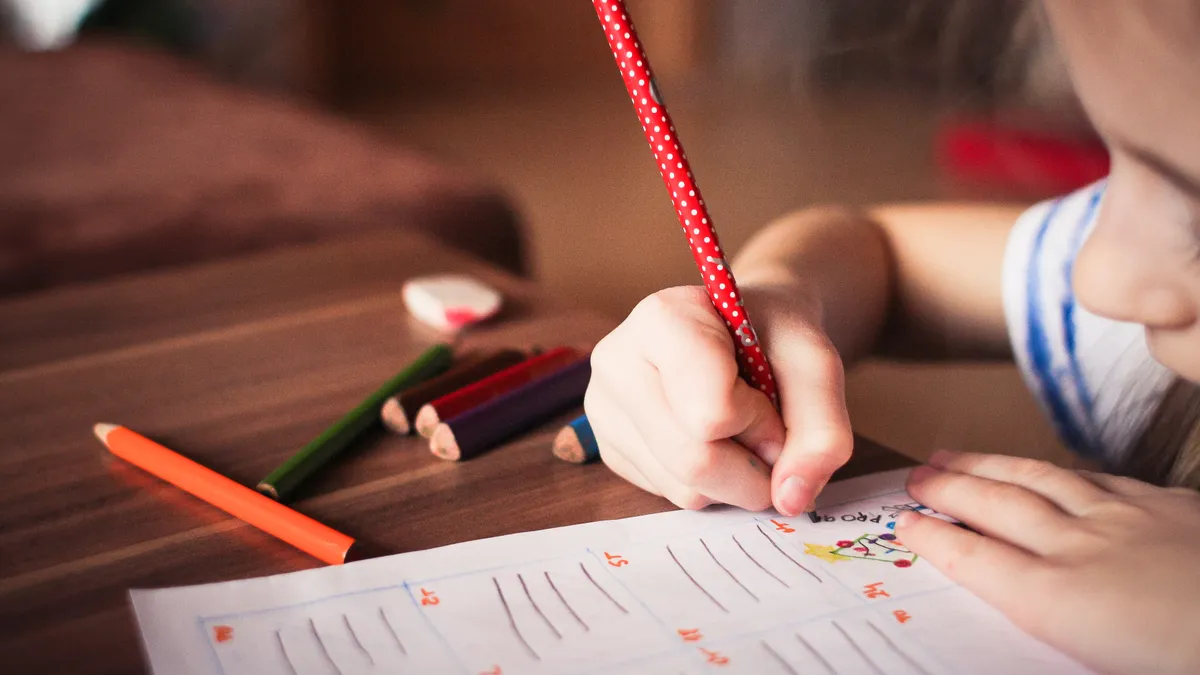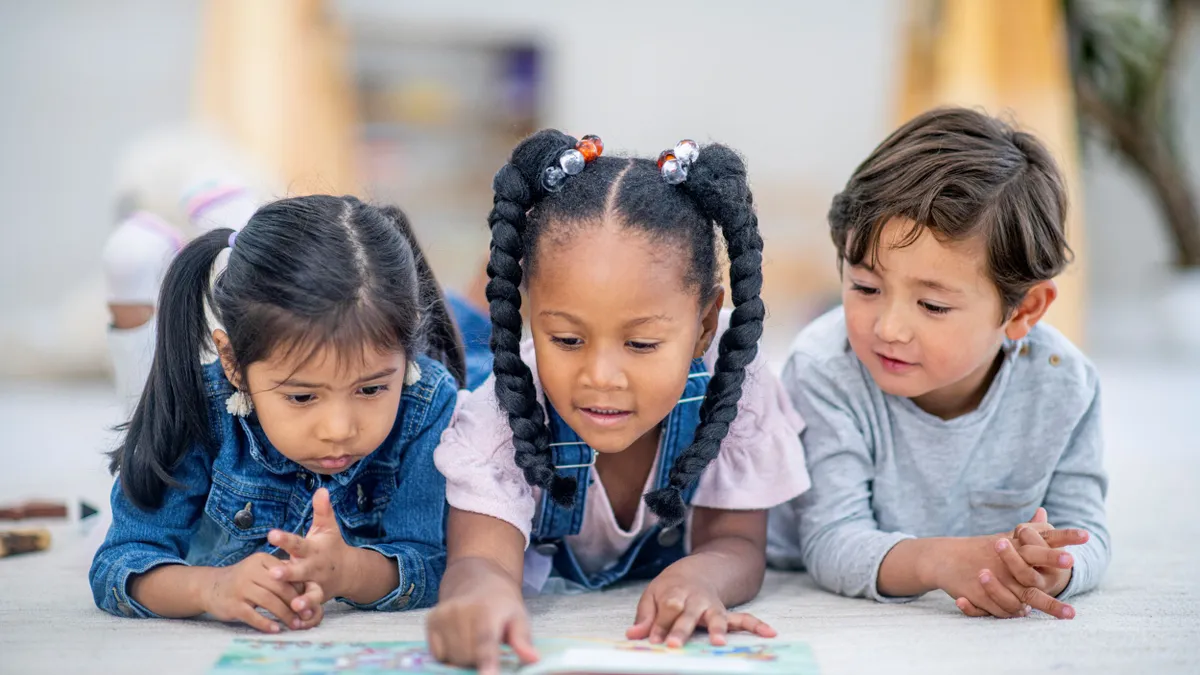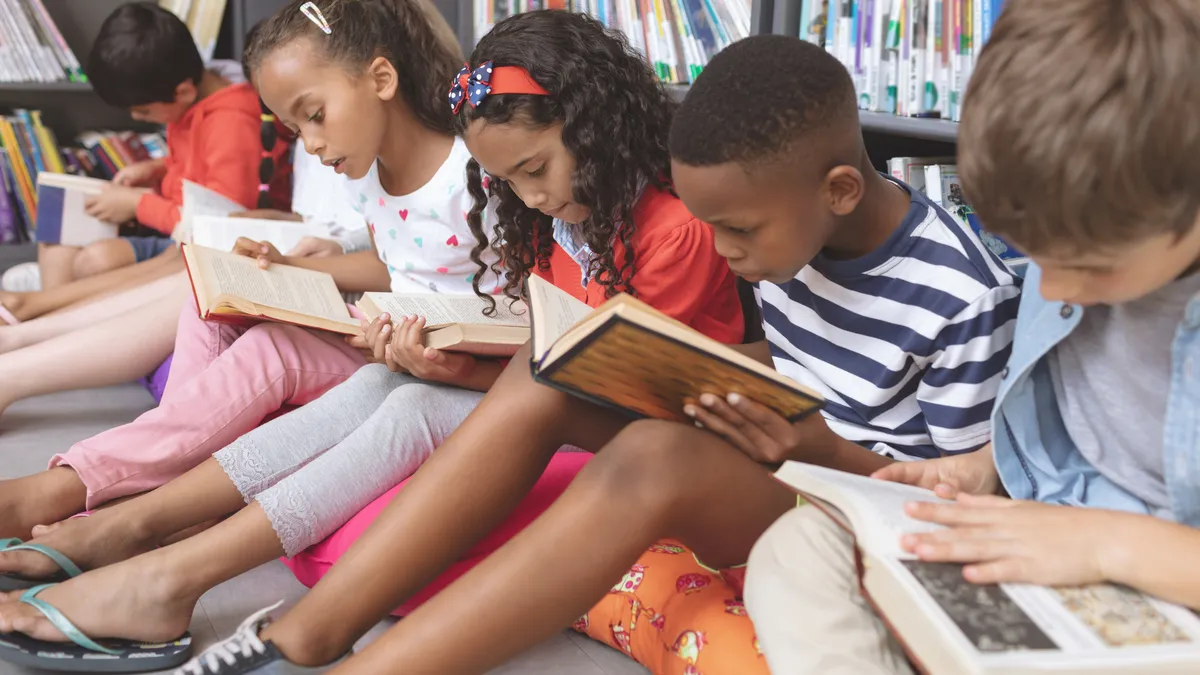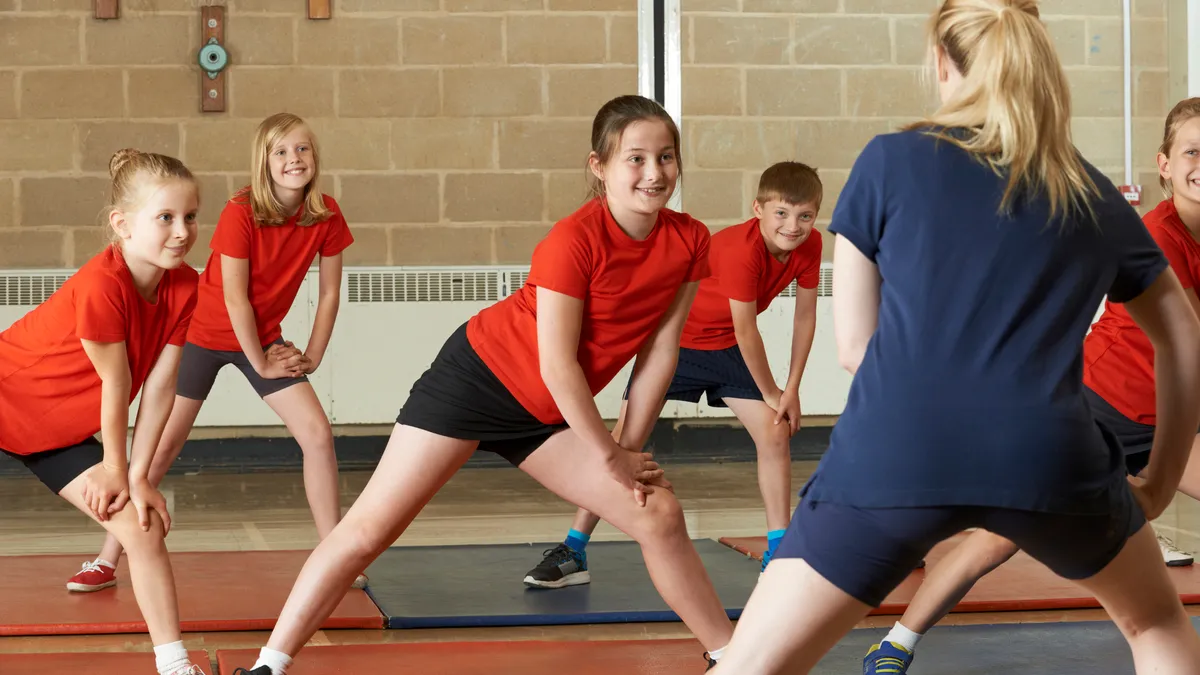As a student, Rachel Smith doodled as she listened to lectures, but she was always able to recall what was said when she looked at what she’d drawn. Today, the former art and math teacher works as a a visual facilitation consultant and trainer, educating students on how to illustrate what they’re learning with just a sketch — what some may call a doodle — and giving them another avenue and language to use when remembering their lessons.
“I have a hard time concentrating, but if something is in my hands that occupies just enough of my brain, I can continue to focus on what I am hearing,” Smith, who blogs at Digital Visual Facilitation, told Education Dive. “I think a lot of people are like that. And I think school doesn’t not support that.”
Doodling in school often has a bad connotation, conjuring the idea of a student not paying attention in class and checking out of the learning process. In fact, research shows just the opposite is happening, and that doodling helps people focus on what they’re hearing to an even greater extent.
In research published in Applied Cognitive Psychology, 40 people were studied, with half of participants instructed to doodle while listening to a phone message about people RSVPing to a party. Those who were able to sketch had a 29% better recollection of the call than those who hadn’t.
All in the hands
Using your hands, rather than a computer keyboard, to capture information may also be better in embedding details. Students who took notes with a laptop rather than by hand were shown to "be impairing learning because their use results in shallower processing," according to the authors of the study, "The Pen Is Mightier Than the Keyboard."
Lori Rice, a 4th grade teacher at West Elementary in Wamego, Kansas, also believes having students draw their lessons focuses their attention and assists with recall. She has students use Sketchnotes — another method of visual note-taking created by designer Mike Rohde — across all subject areas in class, from math and science to English language arts and social studies.
Rice says Sketchnotes can be done in a computer with apps, and points to Studio 54 and AutoDraw as great examples. But she tends to have her students use colored pencils and markers to draw in their classroom journals so they can reference the notes later during other lessons.
“I feel student engagement and learning increases with Sketchnoting,” Rice told Education Dive by email. “Drawing the vocabulary as well as the other connections in the lesson helps them retain the information.”
Don’t aim for perfection
Rice invests some time in showing students how to start drawing what they are hearing. She’ll begin by using short videos and songs for them to watch and listen to, then pause them and discuss what to best use to “present what we were learning,” she said.
Smith also believes students should have some practice time, or time to listen to a TED talk like hers, to try out the process on their own. Or, she said, they can watch YouTube videos of other people sketching. In her work as an independent consultant, Smith runs meetings and takes graphic notes for groups' later use. However, she doesn’t think it's a good idea to have children watch professional illustrators who could make them feel intimidated because their own sketch isn't as sharp.
“If that’s the example, they’re going to feel that’s unattainable, especially older kids,” she said. “Nobody would look at a marble statue, pick up a rock, and think they could make that the first time.”
Instead, students should embrace their stick figures, arrows, underlines and boxes — all perfectly acceptable and workable visual images. She says if students are in history class learning about a battle, a stick figure of a horse and a couple of lines showing a sword in the hand works perfectly well.
Informal learning
This on-the-fly style of note-taking is one that Mineola Middle School Principal Andrew Casale has also embraced as his classrooms have started replacing traditional desks with writable furniture over the past two years across all subjects.
Twelve classrooms out of more than 30 have already been transformed in the New York school, with students now using colorful dry erase markers on the desks. The transition is just part of his district’s initiative to change classrooms for the 21st Century, he told Education Dive.
The school already has 1-to-1 device programs with iPads, but the writable desk surfaces mean the 5th through 7th grade students can jot down notes and sketches and get quick assessments from teachers to see whether they're comprehending the lesson.
Students aren’t supposed to be "doodling randomly," said Casale, but instead staying focused on the content and curriculum. Still, Casale admits the students find the ability to "jot on the table" quite fun with the colorful markers.
They can also collaborate with each other, working together on problems and projects. In some rooms, the tables flip up and can be used as an easel for group work. Casale said he has seen how the process has raised the confidence of students.
"Other kids can see their work, and teachers can give them direct feedback," he said. "And they feel, 'My teacher saw what I’m doing, I’m on the right track, and I’m gonna keep going.'"
Their own way
However educators adopt doodling and sketching in the classroom, the key, according to proponents, is making sure the notes work for the students in how they remember.
Rice said she loves how sketching gives students more autonomy over their own learning. They create the style of notes that helps them recall, in the way that makes sense for them.
Smith couldn’t agree more, saying that if students write mostly words, that’s great. And if the doodles are ugly, that’s fantastic, too.
"You can draw a stick figure as long as you can access that language," she said. "It's about working so the notes make sense across the page, as opposed to listing notes as you hear them."



















